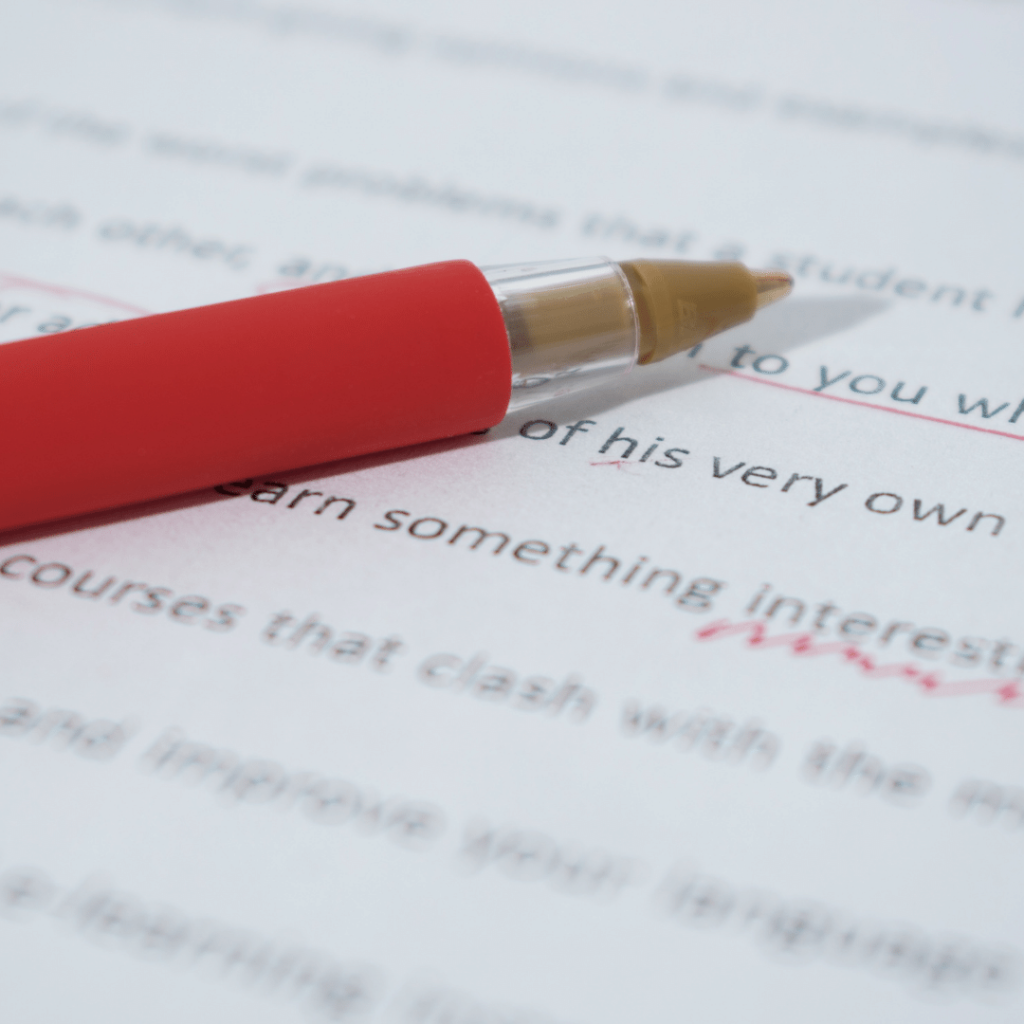Table of Contents
- 1. What is copyediting?
- 2. What do you look for in copyediting?
- 3. Is copyediting the same as editing? What are the differences?
- 4. Benefits of copyediting
- 5. What makes a good copyeditor?
- 6. How to improve your copyediting?
- 7. Where can you get good copyeditors?
- Concluding remark
I attended a job interview as a research officer for a scholarly publisher more than ten years ago.
During the interview, the interviewer asked me the following question: what is copyediting?
Being an outsider in the industry, I didn’t have a clue what copyediting was. I had no idea what the job was or how it helped publications, even though I had already published two books at that time.
How ignorant was I?
After months of training (yes, I did land the job and remain with the organization until today), I realized that copyediting is one of the most important aspects of publishing.
If you want to publish a book, your manuscript must be edited by a copyeditor.
That’s right. It’s that simple. No one buys or reads unedited books because they are full of errors and mistakes. The same goes for a journal article and news publication.
Good copyediting will make a difference. Let’s learn a few things about copyediting.

1. What is copyediting?
Copyediting is the act of reviewing, checking and fixing publication styles, sentence structure, formatting and accuracy of publications.
The copyediting process begins at the onset of production (publication) concurrently with typesetting and proofreading cycles.
Copyediting is done to ascertain that a book, a journal manuscript or other publication types are published with high quality and comply with the standard, formatting and style.
Clean copyediting also allows readers to comprehend the meaning and messages of content easily.
2. What do you look for in copyediting?
Copyeditors always work with pre-determined style and formatting standards. These standards are set even before the publication process begins.
Copyeditors usually work with publishers’ or journal’s style manuals, which are used as the guide in checking for standardization.
For example, my organization is a scholarly publisher that produces books and academic journals. Each of the books and academic journals we publish has its formatting or style.
These formating styles combine our in-house and already established styles (e.g., APA, Chicago Manual of Style, etc.).
Some of the elements that we look for consistency in copyediting:
- Language style and spelling (American English, British English, etc.)
- Punctuation style (Oxford comma, etc.)
- Citation format (Chicago Manual of Style, APA, Harvard, etc.)
- Header and paragraph style
- Line spacing and indentation
- Visual formatting and specs
- line spacing, indentation, etc.)
- Spelling (American English vs. British English)
- Accurate use of acronyms and abbreviation consistency
- Double-checking of facts (names, places) and numbers (e.g., years, stats)
3. Is copyediting the same as editing? What are the differences?

Copyediting and editing are similar, but with differences.
I have written an article that outlines the main differences between editing and copyediting. The differences I discuss include the purposes and the timing.
But the gist is this: editing deals with language fixing (grammar, spelling, context), while copyediting deals with style consistency and formatting compliance.
4. Benefits of copyediting
If there’s one thing I’ve learned from working with publishers for more than ten years now: good copyeditors help bring out high-quality publications that you can be proud to say you have worked.
Copyeditors are the gatekeepers of publications, ensuring that they adhere to high standards and styles before publishing them, either printed or online.
A high-quality publication will be manifested with good copyediting (well, there are many other elements, but copyediting is certainly a vital part of them).
Imagine copyediting as a quality check (or control) of the publication. Good copyediting stimulates a smooth reading experience. Sometimes, the reader would not even know it; they experience it.
Copyediting also helps writers and contributors in their publication process by making the manuscript more readable.
In a nutshell, copyediting helps to make all publications consistent with each other (the same style) and accurate.
5. What makes a good copyeditor?

Becoming a good copyeditor requires you to have an eye for details.
Checking publications with different styles and formatting require great attention to detail. For the untrained eyes, it is easy to miss things.
A good copyeditor must thoroughly check and recheck facts (e.g., names of authors and contributors), titles, headlines, and pagination.
Therefore, catching the smallest errors and mistakes is what differentiates between an experienced copyeditor and a novice.
When a project involves an emergency publication (e.g., hot current affairs), the copyeditor needs to deliver results fast. Hence, excellent time management and speedy work turnaround will be an invaluable asset of a good editor.
Good copyeditors are meticulous, organized and detail-oriented individuals with excellent communication skills (to work well with authors/contributors).
6. How to improve your copyediting?
Copyediting is a learnable skill.
It took me about six months to grasp all the essential copyediting skills. As time went by, I got better and better.
But do note that getting better always involve you making mistakes and discovering new things. And the same thing happened to me.
Usually, you will discover your copyediting mistakes only after the book is printed or when a journal article is published online. Sometimes, the mistakes are so obvious that you wonder and ask, “how did I miss that?”
What’s more, some of my senior friend copyeditors overlooked the simplest copyediting errors. And sometimes, the mistakes are embarrassing.
Trust me. It’s completely normal.
In addition to that, to be a good copyeditor, you need to be a voracious reader as well. The more you read, the more knowledge you will gain.
When reading, you may spot (you certainly would!) copyediting mistakes done by other people and learn from them. I do it all the time. It’s not like we enjoy finding other people’s mistakes. It’s just one way to make us better.
To improve your copyediting, try reading and editing books that you like to read.
Also, I suggest that you start with easier magazines or newspapers before practicing harder materials (such as technical manuals and academic papers).
That way, you will know what mistakes to look for when checking publications of different types.
7. Where can you get good copyeditors?
There are many freelance copyeditors out there. I have outsourced an external copyediting service from Upwork, an established marketplace for freelancers. I have been happy with their copyediting service.
Experienced copyeditors usually charge fees per hour. They also usually have an established client base. On the other hand, up-and-coming copyeditors will take jobs at lower fees to build their portfolio.
You can also find more cost-effective alternatives at Fiverr.
Using freelancing marketplaces, you can set your price and find freelancers that fit your pricing and technical specs. Try not to be too stingy, though.
Good copyediting requires time and process. So, pay the copyeditors that they are worth. When they deliver an excellent job, rate them accordingly and consider paying tips for the good well done.
Also, read my article on ways to practice your copywriting skills.
Concluding remark
In conclusion, I hope you know what copyediting is, its role in publication, and its importance in producing quality publications.
Never underestimate the importance of good copyediting, as it is crucial to the publication process.
If you are a beginner keen to become a copyeditor, learn the skills. Where appropriate, spend some money and enroll in a basic copyediting course. Then work your way up to improve continually.
That being said, learning is a lifetime process. Even though I have done copyediting for more than a decade now, I still learn new stuff daily. And I still make mistakes! After all, it’s part of making ourselves better.

11 thoughts on “What is Copyediting? 7 No-nonsense Facts You Should Know”